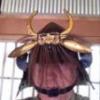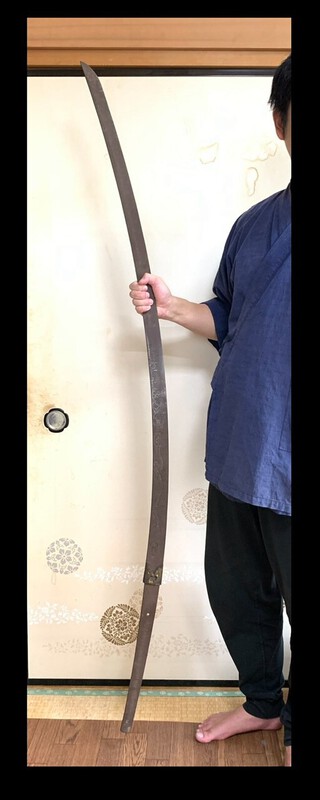-
Posts
14,270 -
Joined
-
Last visited
-
Days Won
275
Content Type
Profiles
Forums
Events
Store
Downloads
Gallery
Everything posted by Bugyotsuji
-

Translation of marks on Tanegashima rifle
Bugyotsuji replied to Wavemaker's topic in Tanegashima / Teppo / Hinawajū
Many of the stamps are not clear, so they are to a degree open to interpretation. Usually with these Jinshin registration numbers there is an indication somewhere on the barrel or stock nearby noting the place of registration. If we follow the same direction as the numbers (which go from right to left), then the bottom word makes sense as Kokufu Ken コクフケン. With the Kanji it would be, as I said above, 国府縣 if you use the old kanji 縣 for 県 Ken (prefecture). (Originally I thought it might be ユリフ, but that did not make much sense as I could find no record of such a place.) This would tell you simply that a gun originally made somewhere in Japan was picked up in the great registration of 1872 in Gifu. -

Translation of marks on Tanegashima rifle
Bugyotsuji replied to Wavemaker's topic in Tanegashima / Teppo / Hinawajū
...is it 1,000 or 2,000? 一千, 二千? Hard to tell with those shadows, but try this 一千八百七十三 -

Translation of marks on Tanegashima rifle
Bugyotsuji replied to Wavemaker's topic in Tanegashima / Teppo / Hinawajū
The gun looks good from here John, well used, with some minor damage and the original coating stripped off completely. The Mei looks to be 正忠 Masatada (or 正良 Masayoshi) + Saku, but I cannot immediately find a record of either personal name without the smith family name above. The gun does have some distinguishing features, but not really enough for me to place it geographically. (Kunitomo?) As to age, we can say loosely mid-Edo. On the side of the butt is the 壬申 Jinshin Bango number from the great round-up of 1872. Looks like 1,873 号 ('go' =number). Under that may be コクフケン 'Kokufu Ken', an early Gifu Prefecture name(国府県?) but I haven't yet figured that out. In early Meiji, the old Han were abolished and a new system of prefectures was introduced. Some of the new prefectures only lasted a few years, merging with others for example, but many kept their original name. (Still working on it) PS Since the barrel has no rifling, it might be better to call it a Tanegashima (smoothbore) matchlock long gun, etc. -
Alex, I sold the blade as the rush subsided. Perhaps I should have kept it. The experts seemed divided! But it was a learning experience for me, and for that alone I give thanks. (But the blade did seem to embody some special feeling. I wonder...)
-
On this site they mention an "O-iwai Zashi" said to have been made by Iga no Kami Kinmichi. - 延寿而抱福(お祝い差)伝日本鍛冶宗匠 伊賀守藤原金道(五代) Den Iganokami Kinmichi - 日本刀の通信販売 明倫産業株式会社 (nipponto.co.jp) I find myself wondering if the term can be applied to any blade that is worn for the genpuku ceremony. 'A blade for the celebration.' Or does it mean a blade that is created specifically for such a ceremony? Even so, a quick search of the J internet does not pull up much information about that specific expression. I am willing to learn!
- 7 replies
-
- 1
-

-
- koto
- translation
-
(and 1 more)
Tagged with:
-
In the Nihonto Meikan, Heianjo Yasuyuki, around Kanbun. Yamashiro. In the Toko Soran. (Same characters, 安幸)
-
Hamfish, that is a separate bill for the box fumigation check. (Not customs or anything you may have paid to Japan.) Australia normally does not allow wooden products in, and after inspection may choose to destroy or fumigate it if necessary. A quick glance will probably tell them that the box is not a bio threat, but they will want to take their standard 100 dollar fee for whatever process they choose to list. And your box together with bio certificate will then be legal in Oz!
-
It’s an interesting field. Hoping you find a reliable shop and some nice additions (and post them here!). That silver ichibu for example. I bet most people here have not spotted the distinguishing feature for the year on it.
-

Please help identify this sword!
Bugyotsuji replied to Zen Swordsman's topic in Fake Japanese Swords
The unusual 田野 may be playing with characters. Reverse these two and you get 野田 = Noda The famous early Edo smith. Noda Hankei, also known as Noda Zenshiro Kiyotaka. NB 圭 Kei may also be playing on this same suggestion, sound-wise. -
Steve, Nobody is somebody around here! He has phrased it in such a way that it is impossible to be sure whether that is a four character name or a combination of name and number. These four characters could be read from left to right or right to left, changing it totally. 二 can be a number (2) or part of a name, as in Shoji above. ロ can be the sound 'ro', used a as a counter, (イ,ロ,ハ = 1,2,3) or it can be kuchi (a mouth), i.e. part of a name, etc. So, with no other context it could even be 2 Oda (Ro) for example, if some rank, or bunk, or cabin is meant. So there are various possible readings depending on what the original writer meant. With no other context, Nobody's answer is the safest.
-
It's not a monkey but Gama Sennin as Colin says, and they are not flowers but sasa (low- growing bamboo leaves) and a pine tree. One typical depiction of pine trees will show a variety of pine with rounded needle bunches.
-

What is considered a deep Sori?
Bugyotsuji replied to Emil's topic in General Nihonto Related Discussion
And some folks might say “I’m deeply sorry!” …when they are not really sorry at all. (Poor attempt at a joke. I’ll get my hat and coat.) -

What is considered a deep Sori?
Bugyotsuji replied to Emil's topic in General Nihonto Related Discussion
Actually that $20,000 may include the cost of replacing some fabric on their shrine float. -

What is considered a deep Sori?
Bugyotsuji replied to Emil's topic in General Nihonto Related Discussion
This Ōdachi has just come up for polishing. At the Goryo Jinja in Nara, they have a JPY 3-million yen cloud/crowdfunding event through October. 御霊神社クラウドファンディング | 御霊神社 (amebaownd.com) -

What is considered a deep Sori?
Bugyotsuji replied to Emil's topic in General Nihonto Related Discussion
The owners of the website should be questioned about these differences. There does seem to be little consistency regarding how deep is 'deep'. Perhaps as you say, it means 'relatively deep for its time'. I saw a blade yesterday with deep sori. It is of course possible that whatever Japanese they are feeding into the translation machinery, such as やや (yaya) (somewhat, slightly, to some degree) comes up with a variety of alternative English words each time. -
正茶 三茶 Surely that second Kanji is not 粟… Neither of these make much sense to me, but just to get your ball rolling! Help!
-
Jussi, the Japanese sentence says roughly that “the nakago features in the ‘Kōtoku Oshigata’, but the actual object itself has never been seen.”
-
Two people asking this question now! I once had a blade by this smith and probably did my search among Japanese sources, mainly on the internet. I found contradictory material and ended up somewhat confused, tracking across the changing names. For this reason I wrote, this will be a 'fun' search! I probably searched through various Meikan too. This Aoi Art auction page (for example) shows a '3rd Generation' wakizashi, from around Kanbun, and they say there were 13 generations of them from the start of Edo, but the NBTHK paper shown below that says, for the same blade, like yours, 後代 'Later Generation' Harima no Kami Fujiwara Teruhiro. 輝広の初代は慶長頃で作品は極めて少ないが、 本作は3代目が作ったものである。 その後も13代までの間一門を継続する。 AS21594-脇差:播磨守藤原輝広作(3代) – 日本刀販売の葵美術 (sword-auction.com) Perhaps Aoi makes this assumption from the overall shape of the blade, i.e simply 'Kanbun Shinto'.
-
Agreed! But you have to start with what you’ve got, and then work from there. Yos143? https://nihontoclub....ovince_value&sort=..
-
Your primary concern is to establish the validity of the Mei. Has it been added later, for example? Can we see the outline of a different, erased Mei underneath? Why is the character 住 (living in) not included? Etc.
-
The papers tell you only that the smith is Harima no Kami Fujiwara Teruhiro (later gen.) I believe this smith changed names and titles so it will be a fun search!
-
Start with the above date "Ryakuo 4" (alternative reading Rekio 4) and work from there.
-
Please see the answer over on your Kantei thread, Walter.
- 1 reply
-
- 1
-

-
暦応四年 神力加錬 千手院 源吉廣 Ryaku-o 4、 Shinryoku Karen (Tempered with the power of the gods) Senju-in Minamoto Yoshihiro From here: 美 WA133 鎌倉 南北朝期 暦応四年 神力加錬 千手院 源吉廣 日本刀 /登録証付 H zy(刀、太刀)|売買されたオークション情報、yahooの商品情報をアーカイブ公開 - オークファン(aucfan.com)
-
From the printed form and the handwriting, the Kantei is Chinese. That does not mean it is automatically bad, but you need to do some more research.





